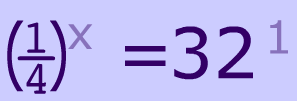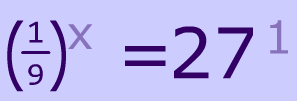Examples of Exponential Equations
$$ 2^{\red x} = 4 \\ 8^{\red{2x}} = 16 \\ \\ 16^{\red { x+1}} = 256 \\ \left( \frac{1}{2} \right)^{\red { x+1}} = 512 $$
As you might've noticed, an exponential equation is just a special type of equation. It's an equation that has exponents that are $$ \red{ variables}$$.
























